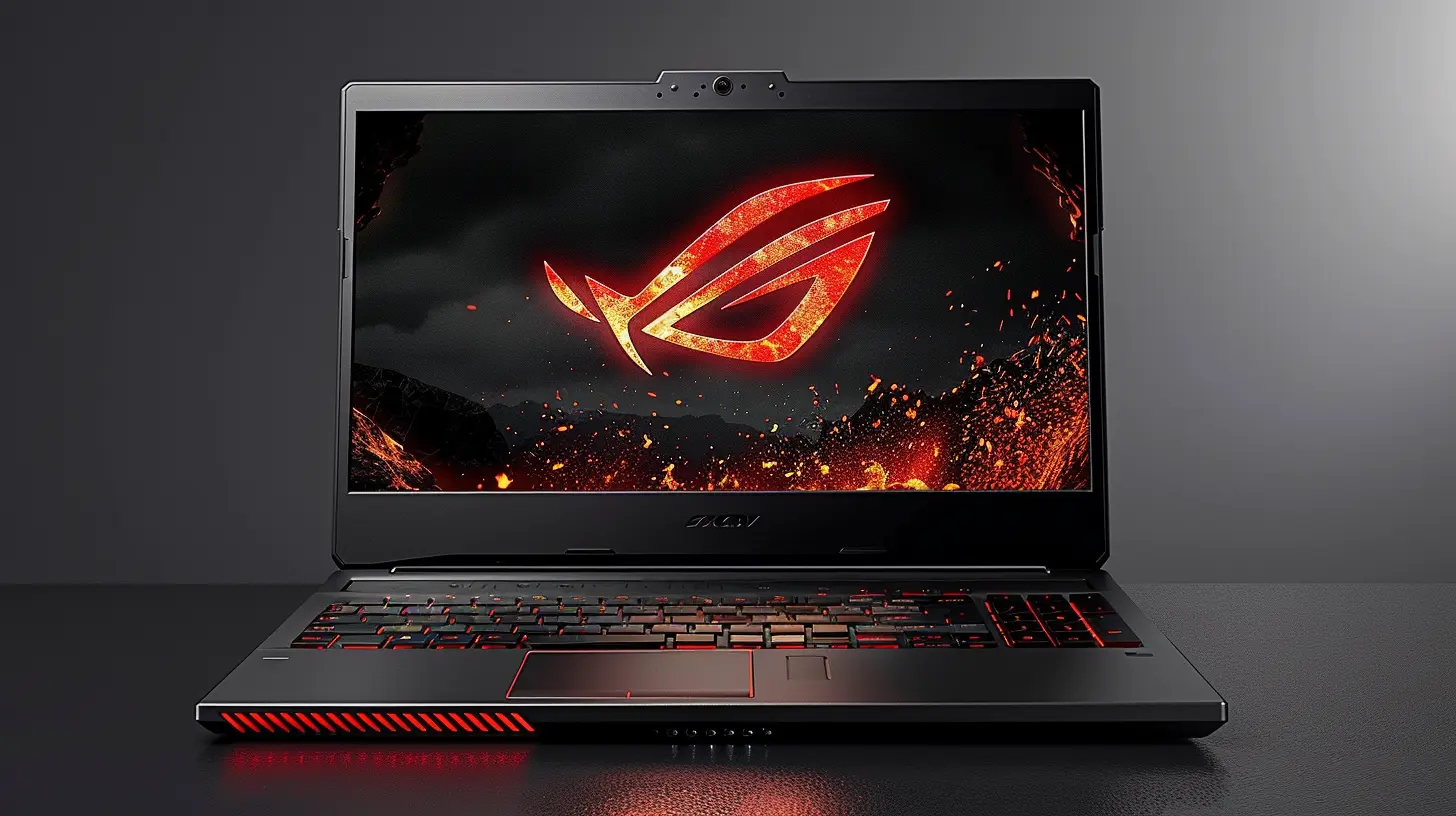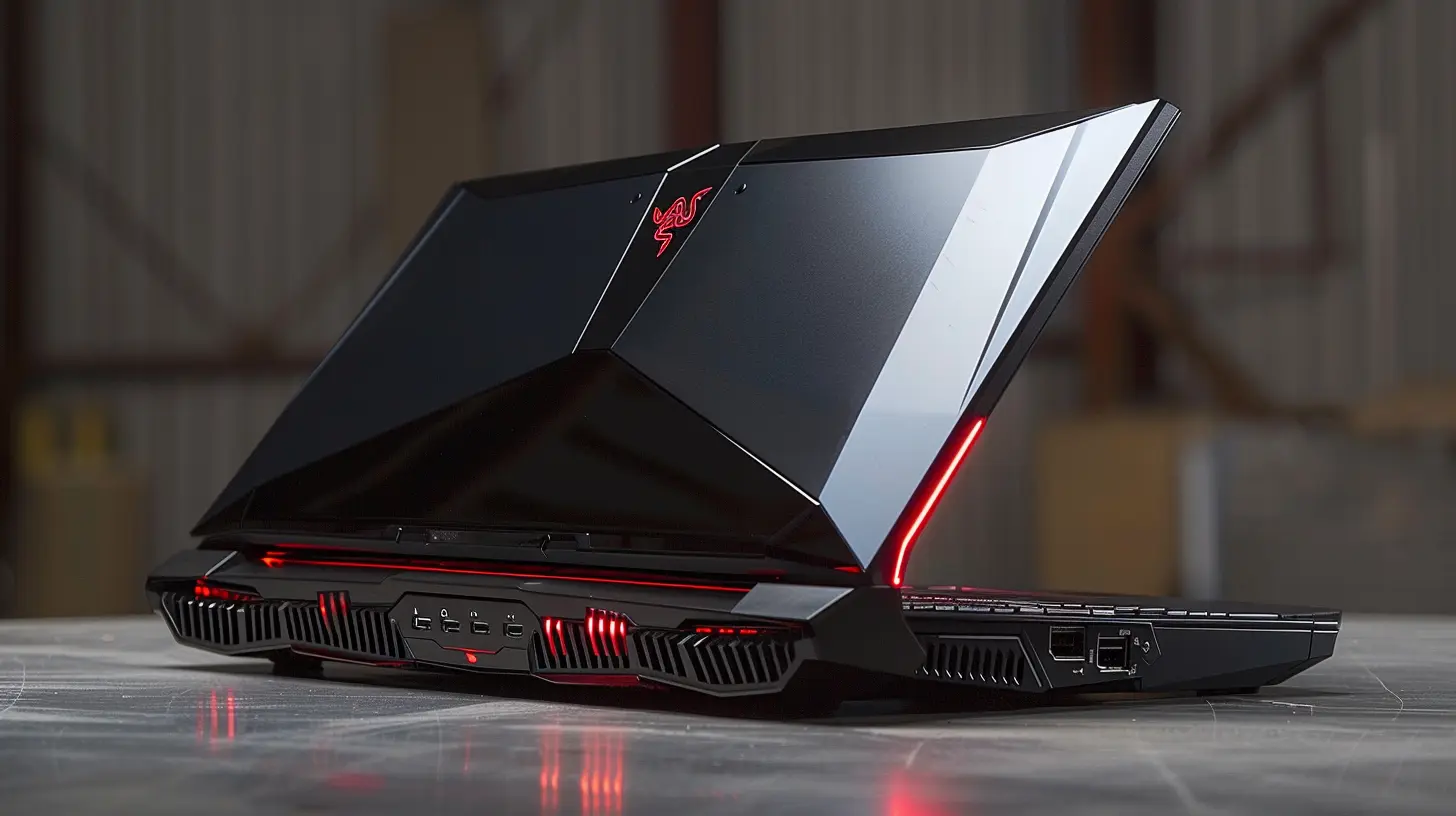Gaming Laptops with the Best Display Quality: What to Look For
18 November 2025
If you're a passionate gamer, you know that a stunning display can make or break your gaming experience. Vivid colors, buttery-smooth refresh rates, and razor-sharp resolution can transport you right into your favorite game, making every explosion, character detail, and background effect come to life. But with so many gaming laptops on the market, how do you find one with a display worthy of your epic gaming sessions?
Well, grab your gaming chair and settle in because we’re diving deep into what makes a gaming laptop display stand out from the rest.

Why Display Quality Matters in Gaming Laptops
Before we geek out over specs, let’s talk about why display quality is so important. Gaming is a visual experience. You don’t want to miss crucial details during intense battles, nor do you want laggy, blurred visuals ruining your aim in fast-paced shooters.A high-quality display can:
- Enhance immersion – A vibrant screen pulls you deeper into the in-game world.
- Improve reaction times – Faster refresh rates mean smoother motion and sharper gameplay.
- Reduce eye strain – A good display minimizes flickering and provides comfortable brightness levels for prolonged gaming sessions.
Now that we’ve established the importance of a killer display, let’s break down the key factors that make one worth investing in.

1. Resolution: More Pixels, More Details
Resolution determines how crisp your display looks. The most common resolutions in gaming laptops are:- 1080p (Full HD) – Still a great choice for competitive gamers who prioritize speed over detail.
- 1440p (QHD/2K) – The perfect middle ground between performance and visual fidelity.
- 2160p (4K UHD) – Stunningly sharp, but requires a beast of a GPU to run smoothly.
If you’re playing fast-paced multiplayer games like Call of Duty or Valorant, 1080p at a high refresh rate is ideal. However, if you love stunning visuals in RPGs like The Witcher 3 or Cyberpunk 2077, stepping up to 1440p or 4K is worth considering.

2. Refresh Rate and Response Time: The Speed Factor
A sluggish display can make even the most powerful gaming laptop feel outdated. This is why refresh rate and response time are crucial.- Refresh Rate (Hz) – How Smooth Your Gameplay Feels
- 60Hz – The bare minimum, but not ideal for gaming.
- 120Hz – A good upgrade for smoother visuals.
- 144Hz – The sweet spot for competitive gamers.
- 240Hz – Ultra-fluid gameplay for serious eSports players.
- 360Hz – Overkill for most, but great for pro-level performance.
- Response Time (ms) – Reducing Motion Blur
- Look for a response time of 3ms or lower to avoid ghosting effects.
- 1ms is the gold standard, ensuring near-instant pixel transitions.
If you’re a competitive gamer, prioritize a high refresh rate and low response time for the best performance.

3. Panel Type: IPS vs. OLED vs. TN
The panel type directly affects colors, viewing angles, and response time. Here’s a breakdown of the most common options:- IPS (In-Plane Switching) – The Best All-Rounder
- Rich, accurate colors with wide viewing angles.
- Ideal for gamers who love immersive visuals.
- Slightly slower response times compared to TN panels.
- OLED (Organic Light Emitting Diode) – The King of Contrast
- Perfect blacks and insane contrast for cinematic games.
- Incredibly vibrant colors.
- Can suffer from burn-in if static images are displayed for long periods.
- TN (Twisted Nematic) – Built for Speed
- Fastest response times, making them great for competitive gaming.
- Inferior color accuracy and viewing angles compared to IPS and OLED.
For most gamers, IPS is the best choice due to its balance of color accuracy, refresh rate, and viewing angles. If you’re after mind-blowing contrast, OLED panels will steal the show.
4. Color Accuracy and Gamut: Do Your Colors Pop?
Ever played a game where the colors just didn’t look right? That’s because not all displays are created equal when it comes to color accuracy.- sRGB Coverage – Aim for at least 90% sRGB for vibrant and accurate colors.
- Adobe RGB & DCI-P3 – If you edit videos or do content creation, a higher percentage (95%+) in these gamuts is ideal for precise color accuracy.
- HDR Support – Look for HDR400 or HDR600 for improved lighting effects and deeper contrast.
A screen with high color accuracy + HDR support will make games look more lifelike, from deep shadows in horror games to sunlit landscapes in open-world RPGs.
5. Brightness Levels: Can You Game in a Sunlit Room?
A dim screen can ruin your gaming experience, especially if you’re in a bright environment.- 250-300 nits – Acceptable for indoor gaming.
- 300-500 nits – Great for well-lit rooms.
- 500+ nits – Fantastic for outdoor or ultra-bright environments.
Some gaming laptops come with anti-glare coatings to reduce reflections, making it easier to play in bright conditions.
6. Adaptive Sync: Say Goodbye to Screen Tearing
Ever noticed those irritating screen tears while gaming? That happens when your laptop's refresh rate isn’t in sync with the GPU’s frame rate. Here’s where adaptive sync technology comes in:- NVIDIA G-Sync – Ensures seamless gameplay by synchronizing your display and GPU (for NVIDIA users).
- AMD FreeSync – Similar to G-Sync but optimized for AMD GPUs.
If you hate stuttering and tearing, a laptop with G-Sync or FreeSync support is a must-have.
7. Size Matters: 15-inch vs. 17-inch vs. Ultrawide
Gaming laptops typically come in 15-inch or 17-inch variants. The choice depends on your preferences:- 15-inch – More portable, lighter, and easier to carry.
- 17-inch – A larger, more immersive display but heavier to lug around.
- Ultrawide (Rare but Awesome) – If you can find one, an ultrawide gaming laptop gives you an expanded field of view in supported games.
If you travel often, stick with 15 inches. If you want the ultimate immersive experience, go for 17 inches.
8. Touchscreen: Necessary or Gimmick?
Some gaming laptops offer touchscreen displays, but do you really need one?Pros:
- Great for casual browsing and creativity apps.
- Useful if you also use your laptop for design work.
Cons:
- Drains battery faster.
- Adds unnecessary weight and cost for gaming purposes.
Unless you plan to use your laptop for creative work, a touchscreen isn’t necessary for gaming.
Conclusion: Which Display is Right for You?
Choosing the right gaming laptop display boils down to personal preference and priorities:- For Competitive Gamers → 1080p, 144Hz+ refresh rate, 1ms response time
- For Immersive RPG Enthusiasts → 1440p or 4K, IPS or OLED, high color accuracy
- For Professional Gamers & Streamers → 240Hz+ refresh rate, G-Sync/FreeSync, color-accurate panel
No matter what kind of gamer you are, investing in a high-quality display ensures every battle, fantasy world, or racing scene looks and feels as epic as possible.
all images in this post were generated using AI tools
Category:
Gaming LaptopsAuthor:

Pierre McCord

